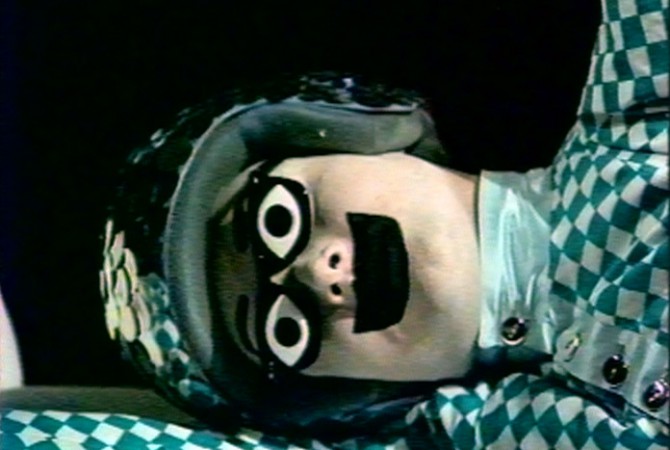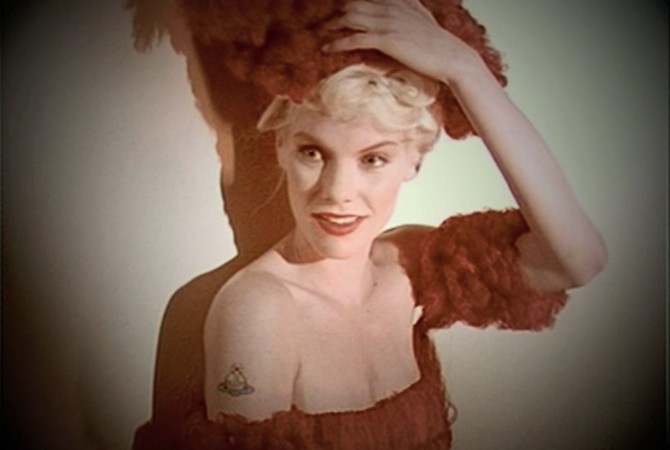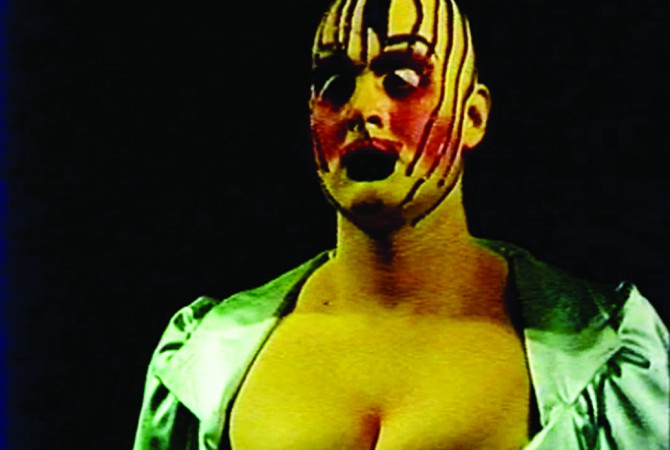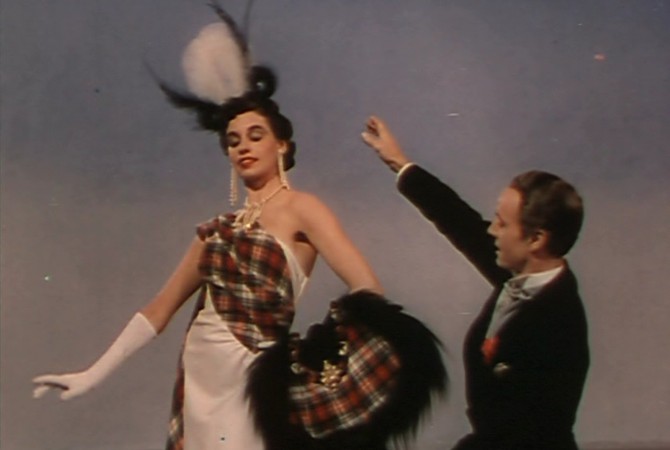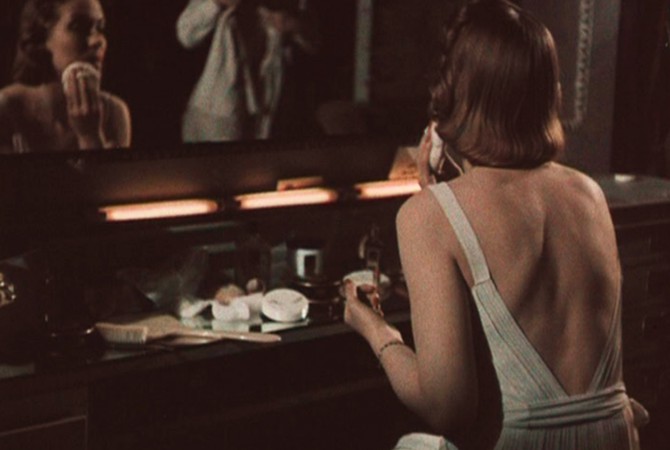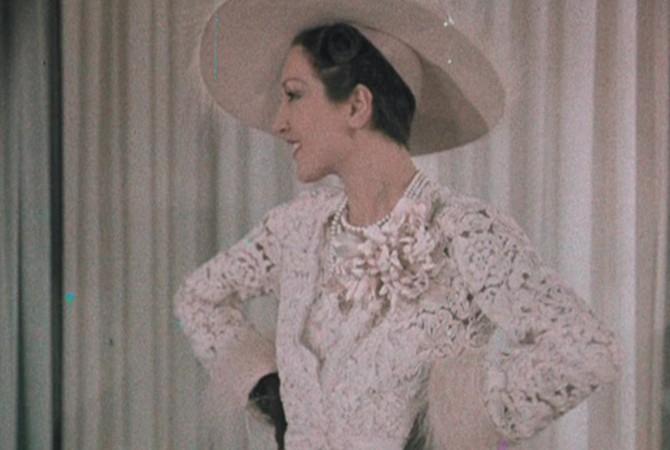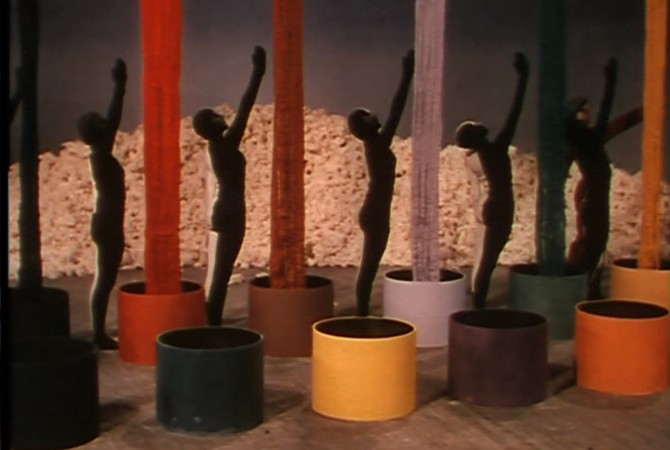Fashion in Film presents a special programme of four little-known films that together characterise the essence of British attitudes to elegance and taste, from classical, luxurious and highly polished to quirky, outrageous and enigmatic. All films are shot in vivid colour, using a variety of colour technologies that characterise their time.
Friday 3 August 2012
6.30pm – 9.30pm
Sackler Centre, Hochhauser Auditorium
Victoria and Albert Museum
Making Fashion (originally shot under the title Design for Spring), dir. Humphrey Jennings, UK 1938/9 (15min)
Jennings’s Making Fashion documents the preparation of Norman Hartnell’s Spring/Summer 1938 collection, interspersing shots of the couturier and his studio at work with images indicating his inspiration (the brilliantly clichéd mix of classical sculptures, spring flowers and nineteenth-century fashion plates leaves little to desire for). It is an intimate yet highly idealised portrayal of the behind-the-scenes of one of England’s grandest and most successful fashion salons, showing a perfectly coordinated ‘body’ of busy skilled workers demonstrating a range of design processes, from draping on a dummy to the execution of a sample, to fitting on a model and encrusting with sequins and jewels. Shot in Dufaycolor, a colour process especially suitable for enhancing pastels tones, and with colour harmony make-up by Max Factor, the sumptuous film culminates in two substantial modelling sequences – one internal, the other a fashion show staged for a small audience. Somewhere between a documentary and an extended commercial (Hartnell was the film’s co-producer), Making Fashion is a rare example of its kind in British pre-war cinema.
The Dancing Fleece, dir. Frederick Wilson in collaboration with Carl Koch, UK 1951 (19min)
Wilson’s Technicolor film The Dancing Fleece, sponsored by National Wool Textile Export Corporation, is a remarkably experimental advertisement-documentary, this time celebrating Britain’s wool production. The film, costumed again by Norman Hartnell, is a riot of colours as it combines a ballet/modern dance choreography (by Harold Turner of Sadler’s Wells), Lotte Reiniger’s charming animations, a quasi-surrealist mise-en-scène in which mannequins are dressed, and detailed, almost caressing shots of wool yarns and fabrics. All these elements showcase the various processes of wool manufacture and promotion, from shearing, spinning, dying and weaving to a final ‘fashion show’.
What’s Your Reaction to the Show?, dir. Dick Jewell, UK 1988 (18min extract from a 44min film)
Filmed over the course of a week using a mix of Kodak and Ektachrome Super-8 stock, Dick Jewell captures the outlandishly self-styled club icon Leigh Bowery in his first art performance at London’s Anthony D’Offay Gallery. It is a unique document of the show presented through a combination of shots of Bowery sensuously posing on a chaise longue and visitors’ reactions to him. In the performance, the dramatically-lit Bowery was separated from the audience by a one-way mirror in which he could silently and ‘narcissistically’ contemplate his image, the total work of art that was his fashion design, hair, make up and assembled jewellery; it was the same image that was offered to the outside world. Many of the audience (who included Bowery’s friends such as the dancer Michael Clark and the fashion designer Andrew Logan) clearly found this form of encounter with the notoriously boisterous Bowery a new aesthetic experience. Although Bowery used to joke that he liked to ‘appeal to maybe one or two people’, his influence across fashion, costume design, art and music has been immense. Sublime, hilarious, sometimes unsettling but always effervescent, his unique position of dandy-meets-clown-meets-sculpture defied established conventions of creative practice and creative being in the world.
‘Vivienne Westwood Showreel’, dir. Paul Spencer, UK 1989 (c. 5min)
Directed by the photographer and filmmaker Paul Spencer in collaboration with Vivienne Westwood’s favourite model Sara Stockbridge, the pretext of this short film was to showcase Westwood’s Spring/Summer 1989 collection. Set in Norfolk’s majestic Melton Constable Hall, Stockbridge enacts a variety of bizarre fantasy scenes with no coherent storyline. These include her being held captive and interrogated, dancing, posing on a sofa or traversing a room through buckets filled with water. The interesting colour effects in some of the scenes were crated by exposing 16mm Kodak tungsten stock to a combination of tungsten lights and daylight. An hour-long, silent reel with unedited rushes was recently rediscovered by the BFI and was for some time considered the only surviving material. Its multiple takes of Stockbridge possess the rare beauty and enigma characteristic of unfinished projects (think Romy Schneider in Henri-Georges Clouzot’s unfinished Inferno of 1964) and are worth viewing in their own right. The reel can be accessed via the BFI Mediatheque.
With thanks to Paul Spencer and www.vaarta.co and Simon McCallum at the BFI.
Project coordinator Karolina Slade. With grateful thanks to Inga Fraser and Ian Butler
Gallery
